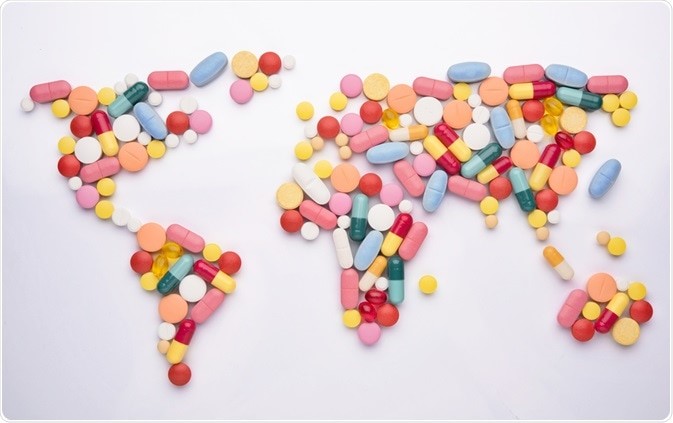Health care is integral to a country’s well-being. Most high-income, developed countries provide or mandate universal health coverage for their people. This usually means that at least 99 percent of the population has health insurance, and some countries provide it free at point-of-service with no co-payments, like the National Health Service in the UK. Generally, though, cost-sharing is a part of the coverage to discourage unnecessary treatment and overuse of health care.
According to the World Health Organisation a health system consists of all organisations, people and actions whose primary intent is to promote, restore or maintain health. This includes efforts to influence determinants of health as well as more direct activities that improve health. A health system is, therefore, more than the pyramid of publicly owned facilities that deliver personal health services but include the institutions, people and resources involved in delivering health care to individuals for example;
- A mother caring for a sick child at home;
- A child receiving rehabilitation services within the school setting;
- An individual access vocational rehabilitation services within the work place;
- Private providers, behaviour change programmes, such as vector-control campaigns.
- Health insurance organisations, occupational health and safety legislation which includes inter-sectoral action by health staff, for example, encouraging the ministry of education to promote female education, a well-known determinant of better health.

Concept of Health System
Health systems have been conceptualized in various ways. Roemer (1991) defines a health system as “the combination of resources, organization, financing and management that culminate in the delivery of health services to the population.” This definition emphasizes the input requirements of a health system. The World Health Organization’s (2000) definition includes “all the activities whose primary purpose is to promote, restore or maintain health.” Rather than emphasizing inputs such as resources, this definition focuses primarily on the outcome aspects of a health system. Irrespective of the definition, a health system should include the following two major components: The first component is the goal of a health system, that is, to address health and illness in society, and the second component is a set of mechanisms that transform health-related resources into health services in order to achieve the goal of a health system.
Although health systems vary across countries, all include similar structural components : health-care providers, consumers of health-care services, health financing agencies, resources suppliers, and government/regulatory entities. Each component is directly linked to the other four components. For example, health providers provide health-care services to the consumers, receive payments from a financing agency to recover the cost of health services, obey the regulations imposed by the regulatory entity, and receive resources from resource suppliers.

Types Of Healthcare Systems
Let’s take a closer look at the four key types of healthcare systems and how they aim to meet the medical needs of populations. They are known as the Beveridge Model, the Bismarck Model, the National Health Insurance Model, and the Out-of-Pocket Model.

The Beveridge Model
In this system healthcare provision is funded by direct income tax deductions. The majority of hospitals are owned and operated by the government. Most healthcare staff including doctors and nurses are employed by the state. The UK’s National Health Service operates on this model. The model itself takes its name from the economist Sir William Beveridge, who mapped out the introduction of the UK’s welfare state and National Health Service in the years following the end of the Second World War. Spain, Cuba and New Zealand also operate this model of healthcare system.
One of the main advantages of the Beveridge Model is that health services are free at the point of use and are available to every citizen. The government is responsible for funding all health services upfront with money raised from tax deductions. Another advantage, according to the Princeton Public Health Review, is that the single-payer structure in this system keeps costs low as the government is the only purchaser.
But universal access to state-funded medical treatment brings its own pressures. Healthcare systems operating the Beveridge Model are frequently beset by long waiting lists for treatment.
One further challenge now facing governments – especially some in Asia, where ageing populations mean there are less young people to pay tax – is how to pump additional funding into health systems when tax revenues have been significantly reduced as the coronavirus pandemic slows economic activity and raises unemployment to historic levels.

The Bismarck Model
This model is funded by insurance payments made jointly by employers and employees. Patients who pay into these schemes have access to ‘sickness funds’ which are used to pay for health services. France, Germany, Japan and Switzerland operate the Bismarck system.
Most hospitals and health services providers are private institutions although the funds themselves are considered to be public. In this system, the insurers are not allowed to take profits and the price of health services is tightly controlled by law. This allows governments to keep costs down and operate financial controls in a similar way to the Beveridge Model.
The Bismarck Model was not established to provide universal access to healthcare. It offers cover for those employees who are able to pay into the scheme. However, issues arise around providing cover for people who are not in full-time employment or unable to work at all.
And countries with ageing populations – where a high proportion of adults are beyond working age and are more likely to be affected by chronic health conditions – including noncommunicable diseases, are facing funding challenges.

The National Health Insurance Model
This model takes in elements of the Beveridge and Bismarck models, to strike a balance between public and private health provision. Countries including Canada and South Korea operate the NHI Model.
In this system, the government is the single payer for all health services, which reflects the state’s role under the Beveridge Model. Under the NHI Model, funds are raised through a state-operated insurance scheme that every citizen pays into. The insurance programme is not-for-profit and no claim is denied.
The majority of health service providers are privately-owned companies as is the case with the Bismarck Model.
The NHI Model has the advantage of providing access to healthcare for all citizens and the centralized management of the insurance scheme cuts the administration burden for hospital managers who only have to deal with a single funding provider.
However, this system can lead to long waiting lists as the chart below illustrates. According to Canada’s Fraser Institute think tank, the median wait time for medically necessary treatment in Canada was 20.9 weeks in 2019. In some regions, the wait can increase to almost a year.
In addition to the pressures caused by long waiting lists, ageing populations will also bring funding and capacity challenges to countries operating the NHI system.

The Out-of-Pocket Model
This method of access to healthcare is most common in developing countries where no formal state-wide system exists. People in rural areas of India and China as well as parts of Africa and South America source healthcare in this way. Health services are not always available and even when they are, they are beyond the financial means of many people.
So what does “out of pocket” mean in this context? Put simply, anybody requiring medical treatment must pay for it on the spot. There is no universal insurance system and income taxes are not raised to provide access to healthcare for all citizens. The reality of this means the world’s poorest people are frequently denied access to health care.
The numbers are staggering. A 2017 report from the World Health Organization and the World Bank concluded that half the world’s population had no access to essential healthcare. Another 100 million people were being pushed into extreme poverty because of the cost of healthcare.

Why do countries use different healthcare systems?
The type of healthcare system a country uses is based on a combination of historical, cultural, economic and political factors. Healthcare systems are often linked to the economic development of a country, and may also reflect key turning points in that nation’s history.
The first nationalised healthcare system – known as the Sickness Insurance Law, or Bismarck model – came about in Germany in 1883. This law specified that employers must provide health insurance for their low-wage employees, with contributions drawn from co-operative sick funds.
Other countries soon followed – Soviet Russia introduced the first fully-state funded healthcare system in 1920, while New Zealand created the first universal health system in the period 1938–41.
The Second World War created an urgent need for countries to pool resources for the benefits of their citizens, leading to the creation of the National Health Service (NHS) in the UK in 1948. Spearheaded by Sir William Beveridge, this system has since become known as the Beveridge model, and was quickly adopted by other European countries including Sweden, Iceland, Norway, Denmark and Finland.
Throughout the 20th century, many more countries started to adopt centralised, state-funded and universal healthcare systems as their economic resources allowed.
Today, the most significant factor deciding a country’s choice of healthcare system is financial. Running a state-funded healthcare system is very expensive – the UK, for instance, spends over £280 billion per year maintaining its NHS. Where countries cannot afford to pay the bill for state-funded healthcare, they often look for alternative models or delegate responsibility to the private sector.
As the cost of healthcare rises globally, some countries are facing a tough choice between continuing to run their state-funded system or giving more leeway to the private sector. In the UK, where the quality of state-funded healthcare is struggling to keep up, as many as 22% of people are now choosing private healthcare. In the future, we may start to see new models of healthcare systems arise to meet the changing needs of countries

What are the Countries with the Best Healthcare?
Healthcare systems differ significantly by country and region, making it difficult to determine where the best healthcare is in the world. Fortunately, some organizations have assessed which country has the best healthcare.
In 2024, CEOWorld Magazine’s Health Care Index analyzed the overall quality of healthcare systems across various countries. The index considered factors such as healthcare infrastructure, competencies of healthcare professionals (including doctors, nursing staff, and other health workers), cost per capita in USD annually, availability of quality medicine, and government readiness. Italy, with a score of 72.15, ranked highest on the index, followed by Singapore at 67.22 and Iceland at 65.15. Other countries in the top ten included Hong Kong, Finland, Taiwan, New Zealand, Australia, Monaco, and Norway.

The Best Healthcare Systems in the World in 2024
The Legatum Institute, a London-based think tank, has also evaluated where to find the best healthcare in the world. Of course, in most countries, you’ll need a travel insurance plan for short visits for up to one year or an international medical insurance plan if you want long-term medical coverage for a year or more to access these services.
According to this assessment, what country has the best healthcare? Singapore comes in at No. 1! Japan and South Korea came in 2nd and 3rd.
Other countries with the best healthcare, according to their rankings, are listed below.
- Singapore
- Japan
- South Korea
- Taiwan
- China
- Israel
- Norway
- Iceland
- Sweden
- Switzerland
- Netherlands
- Luxembourg
- Germany
- Hong Kong
- Finland
- Denmark
- Italy
- Belgium
- Malta
- France














Leave a comment